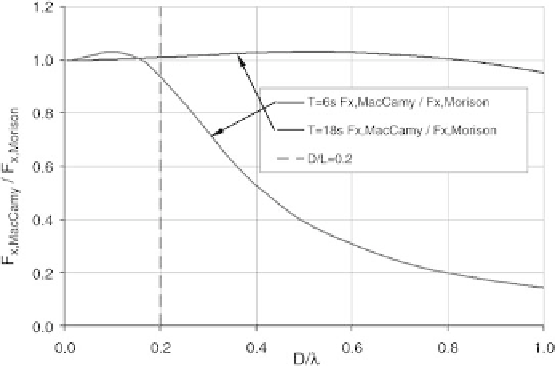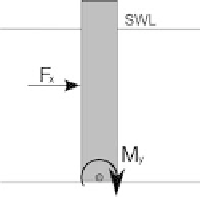Environmental Engineering Reference
In-Depth Information
Fig. 2.45 Hydrodynamic forces acting on the cylinder
the Morison formula can be represented by varying the cylinder diameter and the
wavelength, or rather the wave period corresponding to this.
The resulting total hydrodynamic forces at the base of the cylinder are calculated using
the Morison formula and also with the diffraction formulation of MacCamy and Fuchs
(see Section 2.6.5). Linear wave theory and a water depth of 30m are assumed for both
methods. The Morison formula uses the inertia coefficient c
M
¼
2.0 (Table 2.12) and
the drag coefficient c
D
¼
0.7 (Table 2.13).
Figures 2.46 and 2.47 show representative results of the sensitivity analysis for wave
periods T
¼
6 s and T
¼
18 s. The horizontal forces F
x
(surge) and pitch moments M
y
according to the diffraction approach, related to the Morison formula, are plotted over
the diameter/wavelength quotient D/
l
.
There is hardly any difference between the results of the two different types of
calculation up to the ratio D/
l¼
0.2 (see Section 2.6.5). But above this limit ratio the
Morison formula severely overestimates the wave forces for smaller wave periods, and
hence smaller wavelengths. The error when using the Morison formula remains small
for large wave periods (e.g. for a 50-year design wave) and correspondingly large
Fig. 2.46 Horizontal forces F
x
according to the diffraction approach, related to the Morison formula



